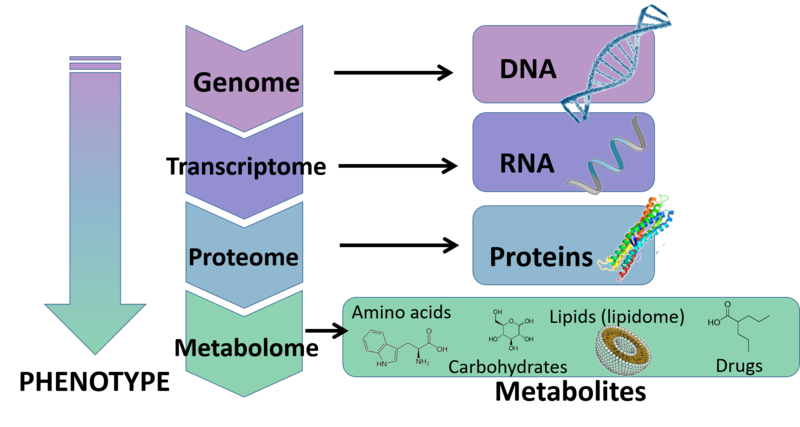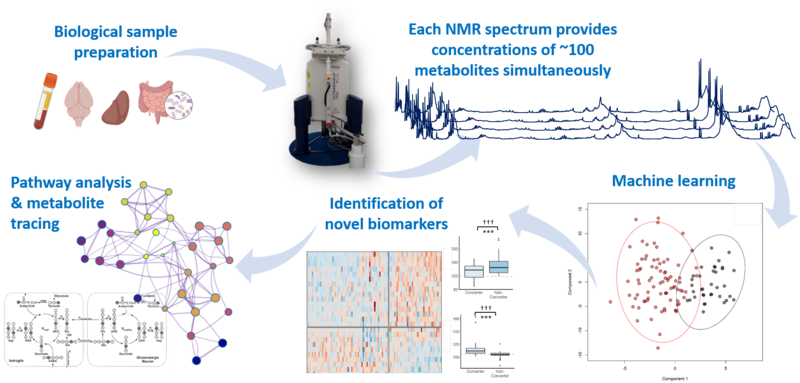Metabolomics

To discuss collaborations, how our metabolomics and multivariate statistical methods could be applied to your research question of interest, and costs of the NMR metabolomics service please contact Dr Fay Probert (fay.probert@chem.ox.ac.uk).
What is Metabolomics?
Metabolomics is the study of all metabolites (products and substrates of the metabolism) in an organism. The direct link between the metabolome and the molecular phenotype means that this powerful approach is ideal for the investigation of disease biomarkers and drug safety screens. We are interested in applying metabolomics methods to study neurological disease and inflammation.

NMR; fast, reproducible, and extremely information rich.
NMR is a highly reproducible technique that requires minimal sample preparation and allows analysis of blood samples in under 10 minutes. The intrinsically quantitative and non-selective nature of NMR allows every molecule in a biofluid or tissue sample (above a sensitivity threshold) to be measured simultaneously. While the basic molecules that make up biofluids remain the same across individuals, the relative quantities of the metabolites differ and produce a distinctive pattern that is unique. Thus, a single NMR experiment provides a huge amount of information within a molecular ‘fingerprint’, which is representative of an individual at a given point in time. As a result, NMR provides significant advantages over other techniques that can only quantify a single molecule at a time and, by analysing the fingerprint of metabolites in combination, can provide a more powerful means of diagnosis. For example, an increase in the amount of molecule A alone may not be sufficient to diagnose or stage a disease while increases in molecules A and B, combined with a decrease in molecule C could enable accurate diagnosis.

Extracting meaningful information from large datasets; Multivariate statistical Analysis
Owing to the information-rich nature of NMR and other ‘omics methods, we use advanced multivariate statistical techniques (pattern recognition, feature selection, machine learning) to extract the molecular patterns that relate to the classes of interest (for example, high disease activity vs. low disease activity). These statistical tools build complex equations able to distinguish between the NMR spectra of biofluid samples from different groups. Once these equations have been calculated and independently tested on a large cohort, they can be used to classify new biofluid samples. This not only provides a means of diagnosing disease but, by interrogating the metabolites responsible for the discrimination, provides clues in to the pathology and biochemical processes underlying a disease, creating new research hypotheses and uncovering novel potential drug targets.

Available Services
NMR Metabolomics |
Statistical Analysis of Big Data and Multi-Omics |
Lipoprotein Profiling |
|
|
|
Contact
To discuss collaborations, how our metabolomics and multivariate statistical methods could be applied to your research question of interest, and costs of the NMR metabolomics service please contact Dr Fay Probert (fay.probert@chem.ox.ac.uk).



